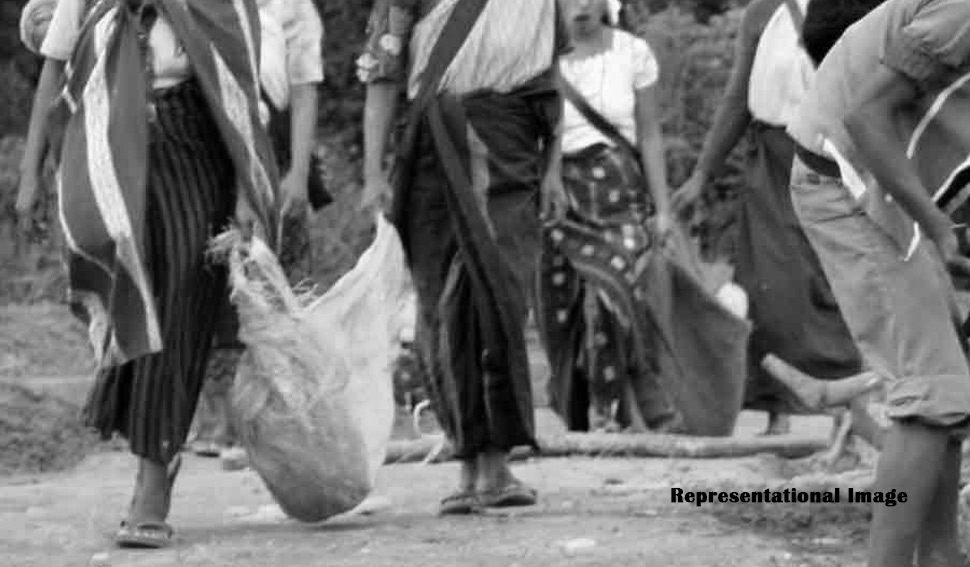India witnesses surge in female labour force participation, led by rural growth

A recent analysis of data from the Periodic Labour Force Survey (PLFS), conducted by Dr. Shamika Ravi and Dr. Mudit Kapoor, reveals a significant rise in the Female Labour Force Participation Rate (LFPR) in India between 2017–18 and 2022–23.
The study, led by Dr. Shamika Ravi and Dr. Mudit Kapoor, highlights significant progress in rural areas, where the LFPR surged from 24.6% to 41.5%—a 69% increase. Urban areas, while showing more modest growth, recorded a rise from 20.4% to 25.4%. States such as Jharkhand and Bihar witnessed transformative growth in rural female LFPR, with increases of over 200% in some cases.
The female labour force participation rate (LFPR) is a crucial indicator of women’s economic empowerment and overall economic inclusiveness. This research paper presents a rigorous econometric analysis highlighting a significant resurgence in female LFPR across Indian states, especially in rural areas, since 2017-18.
There are three broad themes for the empirical analysis: recent trends in female LFPR, the effects of marital status and parenthood on LFPR, and LFPR variations with age and gender across all regions and states of India.

The data used in this study is from the Periodic Labour Force Survey (PLFS) across all available rounds (2017-18 to 2022–2023). PLFS provides detailed employment and demographic data for over 2.5 million individuals, enabling analysis of trends and variations at national, state, and rural/urban levels. LFPR is calculated as the percentage of employed and unemployed individuals (seeking or available for work) relative to the total population aged 15 years and above.
The results are presented in three sections. The first set of results shows the trends in female LFPR from 2017–18 to 2022–23. At the national level, rural female LFPR surged from 24.6% to 41.5% (~69% growth), while urban LFPR rose modestly from 20.4% to 25.4% (~25% growth). There are significant interstate variations. In rural areas, significant increases are seen in states like Jharkhand (~233% growth) and Bihar (~6x growth). Northeastern states also showed remarkable growth (for example, Nagaland: 15.7% to 71.1%).At the national level, urban areas witnessed modest increases overall. However, there is notable growth in urban Gujarat (16.2% to 26.4%, ~63% growth) but marginal changes in urban Tamil Nadu (27.6% to 28.8%).
The second set of results presents the female LFPR by Age, Marital Status, and Household Composition, in particular the presence of children below 14 years of age. The general trends show that female LFPR has increased in almost all states, with rural areas seeing larger gains than urban areas. We also find that married women in rural areas showed higher participation growth compared to unmarried women. The states like Rajasthan and Jharkhand displayed significant growth, particularly among married women. There are, however, significant regional and interstate variations. Among the northern states, Punjab and Haryana continued to have low female LFPR. Among the eastern states, rural Bihar had the lowest LFPR in the country but has shown significant improvements in recent years – especially for rural married women. Among the Northeastern states, there has been remarkable growth in rural areas with Nagaland and Arunachal Pradesh leading. Urban areas of the northeast have shown moderate increases among married women, unlike elsewhere in the country where urban areas have witnessed marginal increases for married women. Across the western and southern states, growth in LFPR is largely concentrated among rural women while urban areas have seen only a modest increase. Andhra Pradesh stands out with a major decline in LFPR of urban women with children.
The third set of results presents the differences in LFPR across gender and age, and analyses how marital status and presence of children make a difference for each category.
The overall results show that female LFPR forms a bell-shaped curve, peaking at 30–40 years of age and declining sharply after. The male LFPR, on the other hand, remains high (~100%) from ages 30–50, declining gradually thereafter. Marital status is a significant determinant of LFPR- for both, women and men. Married men consistently exhibit higher LFPR across states and age groups, while marriage significantly reduces female LFPR, especially in urban areas.
The presence of children under 14 years of age affects female LFPR significantly, especially for younger women (20–35 years) and more strongly in urban areas.
India has witnessed a substantial rise in female LFPR, particularly in rural areas, from 2017–18 to 2022–23. There have been numerous schemes of the Government, especially targeting rural women over the last ten years. These include Mudra loans, the “Drone Didi” scheme and SHGs mobilised under the Deendayal Antyodaya Yojana to name a few major initiatives for rural women. Many other initiatives have been aligned with the vision of women-led development across India. Our paper measures the outcome of these initiatives as a cumulative and significant growth in female LFPR across India and in particular in rural areas. Rigorous research, however, is needed to evaluate these programs’ impacts and to explore the persistent inter-state and rural-urban disparities in India’s female LFPR.

Leave a Reply